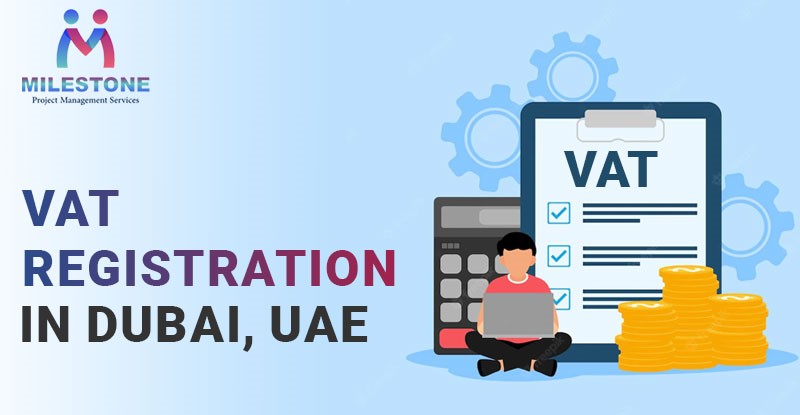With the introduction of Value Added Tax (VAT) in the UAE, including Dubai, businesses must understand and adhere to the registration process to comply with regulations. VAT registration can be a complex procedure, but with a systematic approach, it becomes more manageable. Here’s a comprehensive step-by-step guide to VAT registration in Dubai, UAE:
Step 1: Assess Eligibility
Before initiating the registration process, determine whether your business meets the eligibility criteria set by the Federal Tax Authority (FTA) in the UAE. Businesses that meet or are expected to exceed the mandatory threshold for annual taxable supplies must register for VAT.
Step 2: Gather Required Documents
Prepare the necessary documentation, which typically includes trade licenses, passports and Emirates IDs of business owners, company incorporation certificates, and financial statements. Ensure these documents are in order and readily available for submission.
Step 3: Create an Online Account
Access the FTA’s online portal and create an account for VAT registration. This platform serves as the primary interface for businesses to interact with the FTA throughout the registration process.
Step 4: Initiate the Registration Process
Fill out the VAT registration form available on the FTA portal. Provide accurate information about your business activities, financial details, and other requisite information as per the guidelines.
Step 5: Verification and Validation
Upon submission of the registration form, the FTA reviews the provided information. This stage may involve additional documentation requests or clarifications to ensure compliance.
Step 6: Await Approval and VAT Certificate Issuance
After verification, the FTA will issue a Tax Registration Number (TRN) and a VAT certificate upon successful registration. This certificate serves as official confirmation of your VAT-registered status.
Step 7: Implementation of VAT
Once registered, your business becomes liable to collect and remit VAT on taxable supplies as per the specified rates. Ensure proper accounting systems are in place to accurately calculate and record VAT transactions.
Step 8: Submit Periodic VAT Returns
Comply with VAT regulations by submitting periodic VAT returns within the stipulated time frames. These returns detail taxable supplies, input tax credits, and VAT liabilities incurred during the reporting period.
Step 9: Maintain Compliance and Records
Ensure ongoing compliance with VAT regulations by maintaining accurate records of transactions, invoices, and relevant documents. These records are crucial for audits and demonstrating compliance with VAT laws.
Step 10: Seek Professional Guidance if Needed
Navigating VAT regulations can be intricate, especially for businesses new to the process. Consider seeking advice from tax consultants or experts specializing in VAT compliance to ensure adherence to regulations and optimize tax obligations.
Conclusion
VAT registration in Dubai is a critical process that demands meticulous attention to detail and adherence to regulations set by the FTA. By following this step-by-step guide, businesses can streamline their VAT registration process, ensuring compliance and minimizing the risk of penalties for non-compliance issues.
Understanding the nuances of VAT registration and maintaining ongoing compliance are essential for businesses operating in Dubai. With a structured approach and a clear understanding of the requirements, businesses can seamlessly integrate VAT into their operations, thereby contributing to their long-term success in the UAE market.














